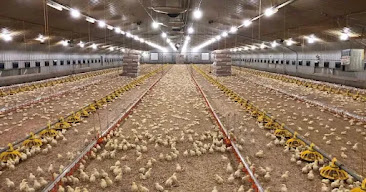Turkey is a domesticated bird mainly known for their meat production. They are part of the most common poultry birds raised by farmers. It's mostly raised in free-range systems. The most common breed of Turkey are
- Imported: These breeds have a special genetic makeup, which makes them unique among its peers in the field of poultry birds. It's know for their growth rate, size, and weight. They are known to reach slaughtering at the age of 3–4 months.
- Hybrid: These breeds are being made by some farmers after a failed attempt to have a pure breed of imported breeds of Turkey. This is done by mating imported breeds with local breeds. Making them have the characteristics of both breeds. They get to slaughter age at 5–7 months. They have much of the imported breeds' traits with height, weight, and growth rate. Due to their percentage purity, they fail to march up to that of imported breeds.
- Local: This is the most common breed of Turkey, with a good feed conversion rate, high performance when raised in a free-range system, and with a high disease resistance level. They have good meat quality and reach slaughtering at 7–12 months.
No matter the breed you are planning to stock, be it imported, hybrid or local breed. You need to have some basic knowledge on how to raise poultry birds from day-old. To become successful in raising your flock; what you need to do includes:
Brooding house: You have to pick a good room with an excellent lighting source and heat source. Making sure all necessary equipment and materials needed are in place.
Equipment and materials: Your litter and heat source should be set up inside the room before arrival of the birds. Feeders should be installed. I would advise not to use the feeder trails; it encourages floor picking, leading to them eating their feces, which will lead to transmission of diseases. Use the invention for chicks feeders, it will boost their feeding rate and eliminate the act of defecating inside their feed. Drinkers should be set along with the feeders.
Feeds: In any living thing, be it humans or animals, food is essential to life. There is a required feed for chicks from a day-old to 4 weeks of age. I'm not in to recommend any feed manufacturer, I can just advise if you can get a good feed mill, please mill your feed with crude protein (CP) of 22—25%. Consult a good animal nutritionist to help you out with a good feed formula if this CP. It helps to speed up their growth and helps to boost their immune system against any infection or disease. In case, no reliable feed mill is close to you, go for pelletized feed (Crumble) chicks starter from a reliable feed manufacturer.
Medication: There are different medication and vaccination schedules for chickens, but turkeys have no specialized medication chart. Most farmers have improvised by using medication charts for broiler chickens, which works.
At arrival, ensure you give your birds glucose to suppress transit stress they have to encounter. Likewise, locate the navel of each bird and clean it with spirit or any mint. This is important to reduce mortality and infection in birds.









